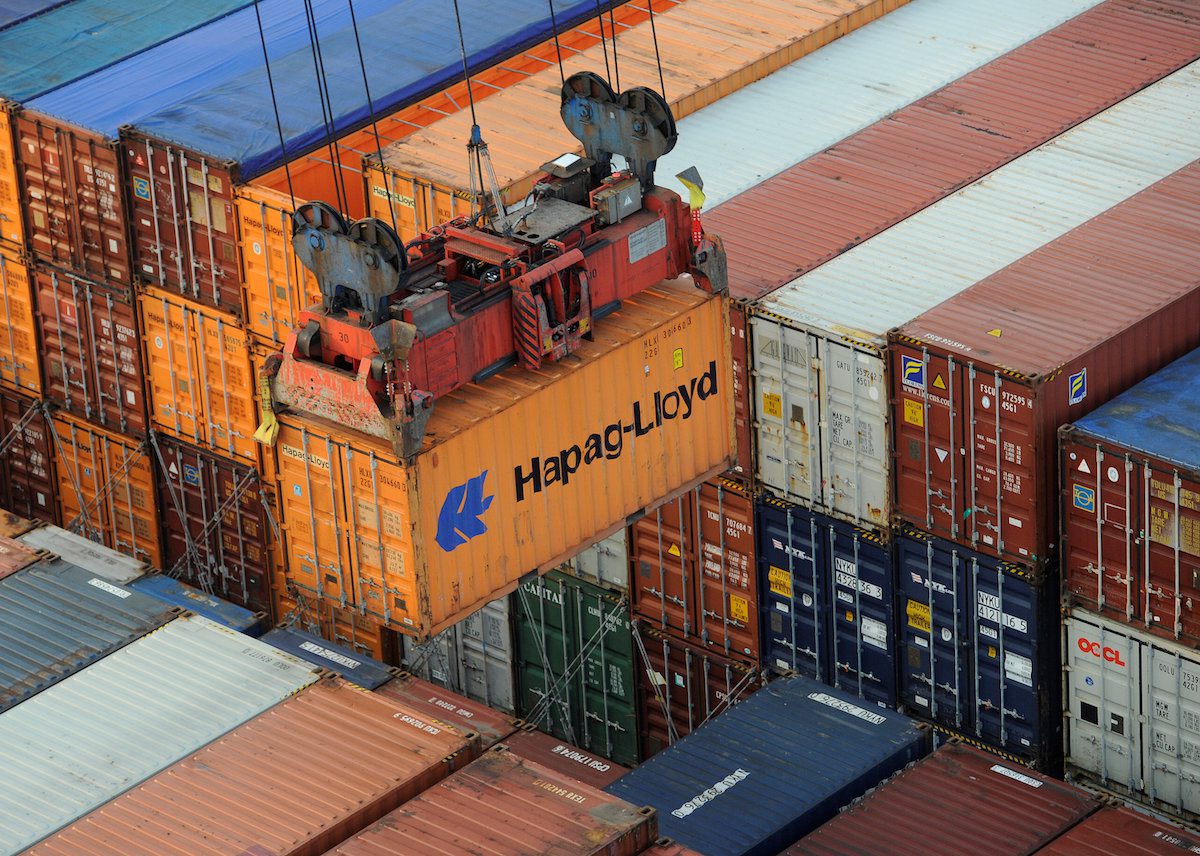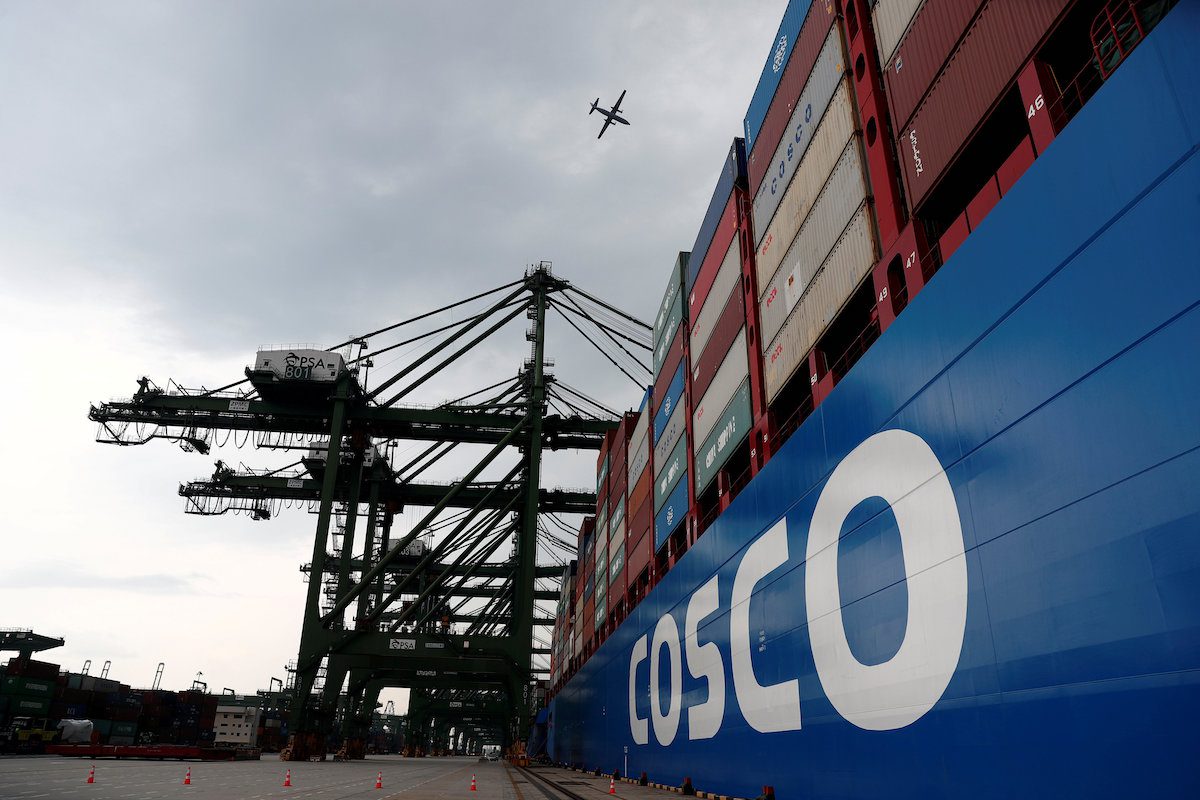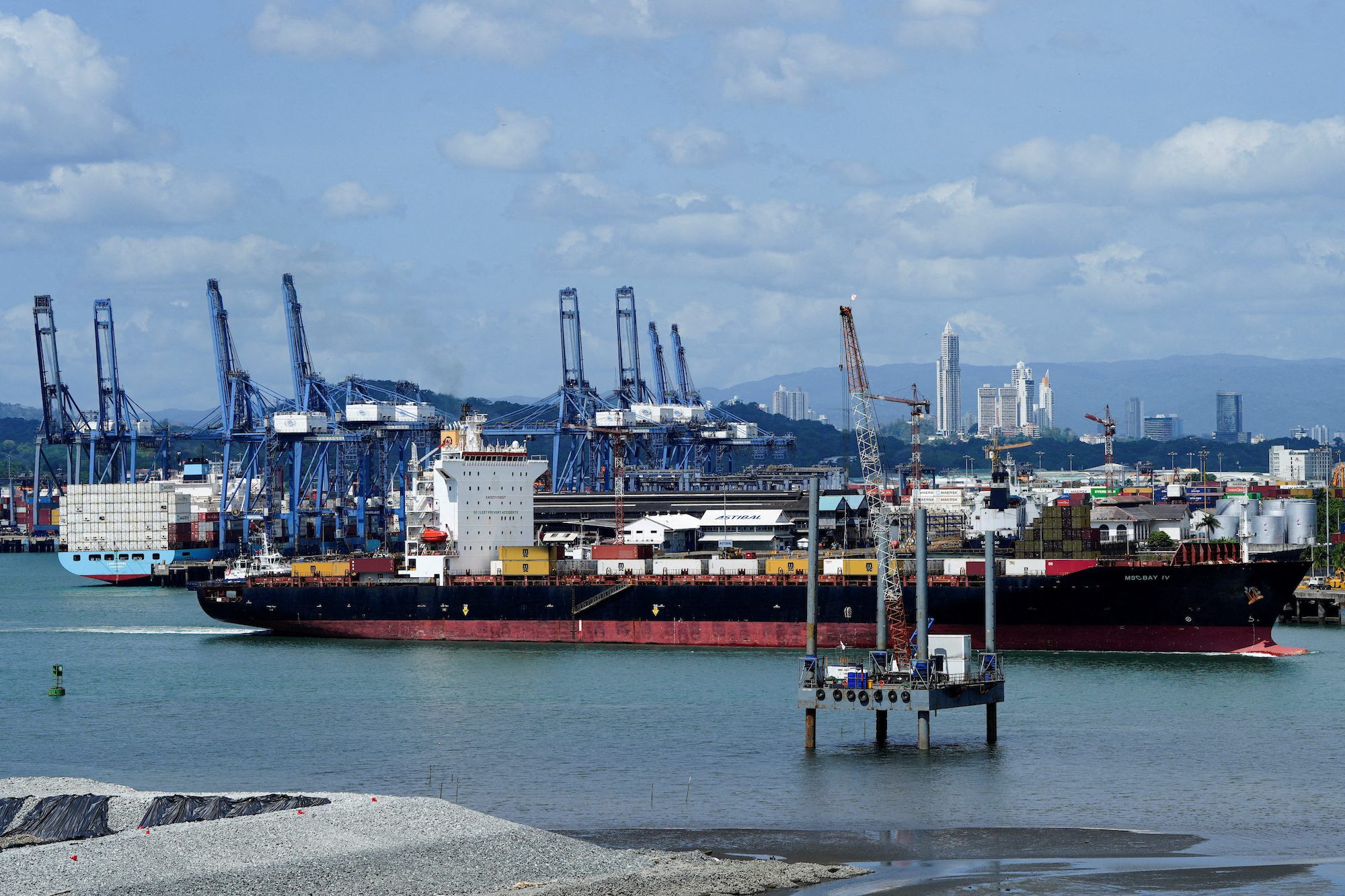FILE PHOTO: A Hapag-Lloyd container is loaded from a container ship at the terminal Altenwerder in the harbour in Hamburg, Germany October 25, 2011. REUTERS/Fabian Bimmer/File Photo
 By Vera Eckert FRANKFURT, July 10 (Reuters) – German shipping company Hapag-Lloyd is cutting costs to cope with a rise in fuel prices that led it to slash full year earnings forecasts last month, its chief executive told shareholders on Tuesday.
By Vera Eckert FRANKFURT, July 10 (Reuters) – German shipping company Hapag-Lloyd is cutting costs to cope with a rise in fuel prices that led it to slash full year earnings forecasts last month, its chief executive told shareholders on Tuesday.
“Major cost positions have risen more than initially expected and are pressuring operating margins,” CEO Rolf Habben Jansen said in Hamburg.
“We are responding short-term to this development through forceful cost management and will keep Hapag-Lloyd competitive this way,” he added.
Among the measures being taken are accepting more valuable cargo, trying to reduce terminal contract costs and stripping out economically inefficient ship systems, he said.
The effects of recent industry mergers have yet to be felt as the integration process is only just starting, he added, referring to a merger in April of three Japanese rivals and Chinese approval for COSCO Shipping Holdings’ takeover of Hong Kong peer Orient Overseas International.
Habben Jansen made no mention, however, of a Reuters report on Monday that bigger French rival CAM CGM had made a merger approach, which sent Hapag-Lloyd shares up to 10 percent higher.
Hapag-Lloyd in June cut its full-year profit forecast, saying freight rates had recovered more slowly than expected, while fuel costs had ballooned as global oil prices respond to supply disruptions and tightness.
The news led to several banks cutting their price targets on the stock, while the company stressed it hoped to reap substantial synergies from its 2017 merger with Arab peer UASC.
Habben Jansen also said the global ship orderbook had shrunk to just 11 percent of the total fleet. That should help bring supply and demand into a better balance over the next 2 1/2 to three years, he said.
At the same time, world shipping demand could rise 5.2 percent per year, which should result in freight rate increases from the second half of 2018 onwards.
But the CEO also said increased geopolitical uncertainty – as the world’s leading economies head for a full-blown trade war – was acutely felt by container liners and their customers.
Hapag-Lloyd last month said it has stopped one of two feeder services to Iran and would decide on the remaining one before a Nov. 4 deadline imposed by the United States.
The company’s shares were down 0.9 percent at 1035 GMT. (Reporting by Vera Eckert; Editing by Maria Sheahan and Mark Potter)
(c) Copyright Thomson Reuters 2018.

 Join The Club
Join The Club











